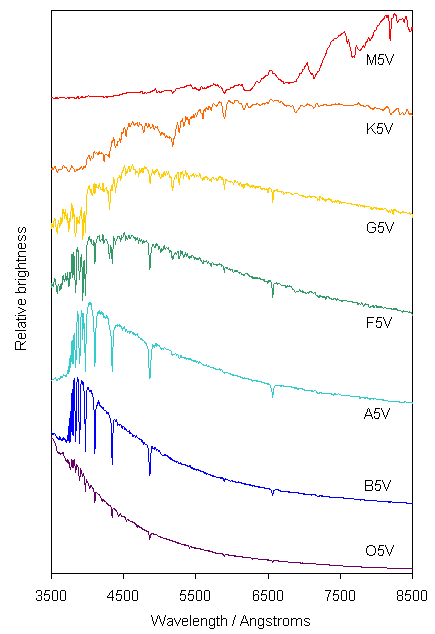bystander wrote:The Farthest Star Ever Seen
astrobites | 2017 Jul 04
Gourav Khullar wrote:
I write this astrobite in my living room, assisted heavily by the lenses in my spectacles. It’s quite a marvelous thing – a pair of glasses. For the last decade or so, a pair of glasses have been necessary for me to marvel at the wonders of the world (and universe, now that studying astrophysics allows me to do that at leisure). Then, imagine my surprise when I came across the cosmic equivalent of my glasses and what a marvel they are! Gravitational lenses are some of the most massive structures in the universe, teaching us about the most distant and the most massive objects in the cosmos. ...
It is important to note that since a galaxy cluster can act as a gravitational lens, just like a magnifying glass it also has the capacity to
‘magnify’ background objects. Imagine a faint galaxy that we are not able to detect with regular telescopes. Now imagine the same galaxy when it happens to lie in the line of sight of a galaxy cluster. Based on its location and distance from the ‘lens’, a faint background galaxy can get magnified by several times, allowing its minimal flux to reach us at last. It is common for astrophysicists in this field to study large objects like faint blue galaxies at redshifts of 2-3 that get magnified by nearby galaxy clusters, which would not have been possible otherwise. This advancing field is only getting better with improved understanding of galaxy clusters as lenses – the calculations of their masses, and how this mass may be distributed throughout the cluster. Today’s study has gone one step further, into uncharted territory. Today’s study has observed a gravitationally lensed star! ...
An individual star at redshift 1.5 extremely magnified by a galaxy-cluster lens - Patrick L. Kelly
et al
http://asterisk.apod.com/viewtopic.php?t=34519
Gourav Khullar wrote:
Image of the initial SN Refsdal observations via the Hubble Space Telescope,
as well as the newly discovered magnified star LS1.
From Hubble observations of a multiple-imaged supernova via gravitational lensing (see this astrobite for more details on Supernova Refsdal), Kelly et al. were successful in observing another extremely fascinating object too –
a blue unresolved source of light, whose flux kept fluctuating. By taking spectra of that object, they concluded that it was a
B-type star whose light was
magnified approximately 2000 times on its way to us! In comparison,
a typical galaxy is expected to be magnified by ~50 times.
What makes this object undoubtedly a star are specific features seen in the spectra – namely the huge drop in flux around a rest-frame wavelength of ~3650 Angstroms called the
Balmer break.
...
It turns out that this star, called LS1, is at a redshift of ~1.5, the farthest star ever discovered. For context, 99% of the stars you see in the night sky, are within the Milky Way.
...
The light travel distance from LS1, on the other hand, is
9 billion light years !
...
Other properties of the star have also been observed –
its temperature (~11000 K), its transverse velocity or motion in the sky (~1000 km/s) and the reason why this star magnified to the extent it did.
...
...there are certain surfaces around the lens that are called ‘caustics’. These surfaces correspond to a
‘mathematically infinite’ magnification in ideal lens models, and if an object is present on these unique surfaces, even a very faint object can pop out in lens observations!
Sizes of stars. Source: Wikimedia Commons user Kieff.
I find all of this quite amazing! LS1 is an "infinitely magnified" - well, at least 2,000 times magnified - B-type star 9 billion light-years away, whose temperature is 11,000K. What kind of a B-type star is that? Well, the strong Balmer break and the relatively low temperature - low for a B-type star - tells us that it is a rather late B-type star. Prominent Rigel in Orion is a B8Ia-type blue supergiant, whose temperature is
11,500K. The magnified star LS1 is slightly cooler, so its spectral class might be B8 or B9.
But it certainly matters if LS1 is a supergiant star like Rigel (
85,000 solar luminosities) or a B8V main sequence star like 18 Tauri (
73 solar luminosities). Look at the picture above right showing typical sizes of stars. I don't feel convinced that the picture is absolutely accurate in all its details - I distrust the yellow color of the F-type star, for example - but I believe that the sizes of the stars are basically correct for main sequence stars. But what about supergiant stars? If two stars are the same temperature, but one is ~700 times brighter than the other one, the brighter star would have to be ~25 times bigger than the other one, or at least its radius would have to be ~25 times bigger than the radius of the smaller star. It would most definitely be easier for any cosmic lens to magnify a terrifically distant Rigel into visibility than to do the same thing for an equally distant 18 Tauri, if Rigel is 700 times brighter than 18 Tauri!
Supergiant B-type stars of some 18 solar masses like Rigel are extremely rare. Cool B-type main sequence stars of some 3 solar masses like 18 Tauri are so much more common, but even they are really rare compared with all the little main sequence K- and M-type stars that must have been present at the same redshift. So why was it a B-type star that got magnified, even though B-type stars are rare?
Probably because all the little K-and M-type main sequence stars 9 billion light-years away would have been too faint to be detected this way, even if they had been "infinitely magnified".
Well, the whole thing is utterly amazing and marvelously fascinating, in any case!

Ann



